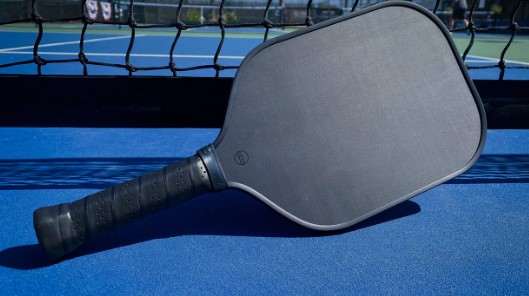Pickleball has become a popular sport in recent years, attracting players of all ages and skill levels. With this rise in popularity comes the demand for better equipment, especially for pickleball paddles.
One key factor that can greatly affect the performance of a paddle is the type of material used in its construction. In this article, we will take a closer look at two commonly used carbon fiber materials – pickleball paddles T700 carbon and Rough T700 Carbon Fiber – and how they compare in terms of performance when used in pickleball paddles.
What is T700 Carbon?
T700 Carbon is a high-grade carbon fiber material that is known for its excellent strength and stiffness. It is widely used in various industries, including aerospace, automotive, and sports equipment. T700 Carbon has a tensile strength of 4900 MPa (megapascals) and a modulus of elasticity of 230 GPa (gigapascals), making it incredibly strong and stiff.
In pickleball paddles, T700 Carbon is used in the face of the paddle, providing a solid hitting surface that can withstand powerful shots and reduce vibration.
What is Rough T700 Carbon Fiber?
Rough T700 Carbon Fiber is another type of carbon fiber material that has gained popularity in recent years. It is made by adding a textured layer on top of the traditional smooth T700 Carbon fiber weave. This textured layer is created by adding roughness to the fibers during the manufacturing process.
The added texture on the surface of Rough T700 Carbon Fiber increases its surface area, resulting in better grip and control over the paddle. It also helps to create more spin on shots, making it a popular choice among players who use a lot of spin in their game.
Performance Comparison
So, how do these two materials stack up against each other when it comes to performance in pickleball paddles? Let’s take a look at some key factors that can affect paddle performance:
Power and Control
Both T700 Carbon and Rough T700 Carbon Fiber are known for their excellent power and control properties. The stiffness of T700 Carbon allows for powerful shots without sacrificing control, while the added texture on Rough T700 Carbon Fiber provides better grip and maneuverability.
In terms of power, both materials perform similarly, but Rough T700 Carbon Fiber has a slight edge when it comes to control due to its textured surface.
Durability
When it comes to durability, T700 Carbon is known for its strength and ability to withstand high-impact shots. However, the added texture in Rough T700 Carbon Fiber can make it more prone to wear and tear over time.
To ensure longevity, it is important to properly maintain and care for both types of paddles by avoiding excessive impact or exposure to harsh elements.
Vibration Dampening
Vibrations can greatly affect a player’s performance and comfort on the court. T700 Carbon is known for its ability to reduce vibrations, making it a popular choice among players who prefer a smoother feel on their shots.
Rough T700 Carbon Fiber, on the other hand, may not have the same level of vibration dampening due to its added texture. However, this can also be a positive aspect for players who prefer more feedback and control on their shots.
Choosing the Right Paddle for Your Playstyle
Selecting the ideal pickleball paddle often comes down to personal playstyle and preference. Players who prioritize raw power and a smooth, consistent feel may lean towards T700 Carbon paddles for their excellent balance of strength and vibration dampening. On the other hand, those who rely heavily on spin and precise control might prefer paddles constructed with Rough T700 Carbon Fiber, as these paddles offer enhanced grip and the ability to impart more spin and finesse on the ball. By understanding the characteristics of these materials and how they translate to on-court performance, players can make more informed decisions, ultimately enhancing their overall experience and success in the game.
Conclusion
In conclusion, both T700 Carbon and Rough T700 Carbon Fiber are excellent materials for pickleball paddles. They offer similar levels of power and control, with slight variations in terms of grip and vibration dampening.
Ultimately, the best material for your paddle will depend on your personal preferences and playing style. It is important to try out different paddles and materials to find the one that works best for you. Whichever material you choose, make sure to properly care for your paddle to ensure its longevity and optimal performance on the court.
